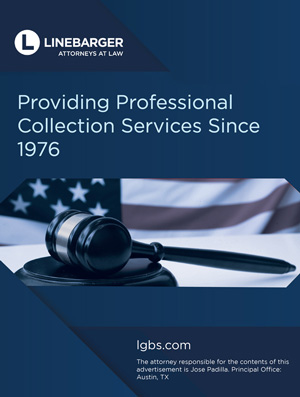It didn’t take long to figure out that a lot of the organizing and engagement that resulted in the January 6 attack on the U.S. Capitol had its roots online through social media platforms—some niche, others very mainstream. The horrifying scenes of a mob chasing and beating officers of the law will remain in our national collective consciousness for a long time. Those actions were based on a series of shared grievances, which spread as aggressive disinformation, reminding us that the distance between the online world and the front steps of government buildings can be perilously short. In the words of Camille Francois, the chief innovation officer at Grafika, “Disinformation continues to have real-world, offline impacts. 1”
Some may use the mob scene as another in the long list of reasons why courts should recoil from any participation in the online world. Others may say judges are incapable of reconciling their constitutional obligation to be fair and impartial when engaging online where everyone has an opinion. Quite the opposite is true. Modern communications are compatible with our justice system. A telecommunications revolution has taken place all around us, and it’s long past time for state courts to build a social media following. Courts are accused of being risk-adverse institutions, but not embracing new media can damage courts. Clear, reliable information delivered in a format accessible to average users is valuable and safer than what may happen when courts fail to speak up for themselves and someone else controls the narrative.
The Brunswick Group, one of the nation’s leading communications and public affairs firms, recently conducted research with corporate shareholders and found that “93% of financial readers expect to hear from a CEO online during a crisis, and 7 out of 10 people trust a CEO who’s online.”2 A survey of court administrators and PIOs in May of 2020 suggests that courts with social media practices and policies fared better in coping with the pandemic crisis than those that did not.3 There is mounting evidence that, pitfalls notwithstanding, courts can engage online and should consider doing so proactively.
There are many reasons for courts to embrace social media.
- Many Americans use social media frequently, not just to watch cat videos or to post pictures of their kids’ birthday parties. NCSC’s 2019 national opinion poll found that half of all Americans say they use YouTube at least weekly.4 This number is substantially higher for those under the age of 40. In other words, the audience courts need to reach is increasingly more likely to turn to their Facebook page, rather than to a local newspaper.
- Conversations are already happening online. There is an age-old rule in communications that if you don’t speak for yourself, someone will speak for you—and you may not like what they say. Consider the impact crowd-sourced information and reviews have had on the legal profession. Entities like Avvo and FindLaw have taken advantage of changes in online behavior by posting consumer ratings of private attorneys. It’s hubris to think that just because you don’t see people talking about you online, that they aren’t having those conversations. Rather than ignore it, why not join it?
- Social media channels allow courts to develop an authentic voice. Messages do not need to be filtered through an intermediary, who may muddle the message. Clarity can help build public trust and confidence. Other parts of government have recognized how critical social media is in delivering messages in a timely fashion. The U.S. Department of Health and Human Services, with over one million followers on Twitter alone, used social media extensively to educate around the pandemic—a video featuring the U.S. Surgeon General has been viewed over 100,000 times.5 If you’re looking for a closer-to-home model, look no further than Florida, where a multiyear state courts campaign has produced amazing results in “the Sunshine State” thanks to an organized and dedicated approach.6
- With a robust social media presence and plan, it’s easier to detect and respond to misinformation by being able to rapidly communicate with your audience ahead of time. NCSC has conducted extensive awareness-raising and training to assist state courts in being prepared for disinformation, which is a particularly malicious subset of misinformation. In fact, extensive research shows that Russia engaged in a multiyear disinformation campaign targeted at the U.S. justice system in an effort to undermine the public trust Americans place in their courts.7
- Courts are called upon to improve knowledge on civic matters related to justice. Social media is an extraordinarily easy way to do that. Without a speakers’ bureau or canned speeches, you can use social media to educate Americans in an easy-to-digest and ready-to-recall package. One of my favorite examples is a post from the Florida Supreme Court’s Facebook page, which explains the background of Gideon v. Wainwright. According to Craig Waters, the public information officer for the Florida Supreme Court, hundreds of thousands of people have viewed and engaged with that one post alone.
Compared to the cost outlay of paid advertising, slick videos, or built-from-scratch websites, social media is relatively inexpensive. Investing in some helpful tools may make your efforts go much farther, and some court systems may consider at least one full-time staff position to support a social media push. These costs are relatively modest for the value you can receive in return. In a world of abundant free speech, social media channels enable courts to make clear, correct, timely information available to the public. Making full use of this communication method can help everyone understand courts better.
For additional resources on this topic:
https://www.ncsc.org/socialmedia
blog.hootsuite.com/social-media-government
sproutsocial.com.insights/social-media-and-government
ABOUT THE AUTHOR
Jesse Rutledge is vice president, External Affairs, for the National Center for State Courts.
- See “Social Enemies: The Corporate Threat of Misinformation,” video, Reuters Next.
- Craig Mullaney, “A 2021 Resolution for CEOs: Put Social Media to Work for You,” Brunswick Group, January 5, 2021 (emphasis added).
- “Early Lessons Learned in Communications: A Pandemic Resource from CCJ/COSCA,” National Center for State Courts, Williamsburg, Va., December 1, 2020.
- NCSC’s “State of the State Courts 2019 Poll.”
- See https://twitter.com/HHSGov/status/1289223176069636099?s=20.
- See “Delivering Our Message: Court Communication Plan for the Judicial Branch Year Two Report,” Florida Conference of Court Public Information Officers, July 12, 2018.
- Suzanne Spaulding, Devi Nair, and Arthur Nelson, Beyond the Ballot: How the Kremlin Works to Undermine the U.S. Justice System (Washington, DC: Center for Strategic and International Studies, 2019).



